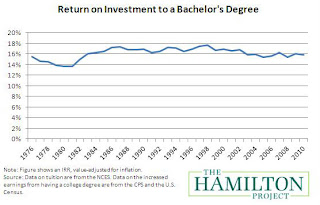There has been a lot of gun violence lately that has made the news, but we often forget just how much gun violence goes on day to day in the US. I don't know the precise policy response but I am convinced by one thing: the evidence is pretty convincing that more guns leads to more gun violence. The one really stupid response to these tragedies would be to call for even more guns: let's arm everyone because that will make us safer!
And so of course the NRA today does exactly that and has come out with a statement that essentially says the answer to the problem of gun violence is ... wait for it ... more guns! I know I am venturing into dangerous ground here criticizing the NRA but this is truly stupid. Do we really want kids to grow up knowing armed guards are necessary to protect their safety? And the same folks who are calling for armed police in schools are likely the same ones who will complain loudest when taxes have to be raised to pay for it.
And, by the way, any argument that the Newtown tragedy would have happened independent of guns is absurd, so let's just not even go there. But this is an economics blog and the point of this post is to point to the evidence.
Here is an excerpt from an old blog post:
One thing we can't do is look at correlations: the fact that gun ownership and crime are positively correlated tells us nothing about the causal link. So what economist Mark Duggan did, in his groundbreaking paper "More Guns, More Crime" was to find something that is correlated with gun ownership, but uncorrelated with unexplained variation in crime. In his case he looks at subscriptions to gun magazines. This is plausibly correlated with gun ownership and unrelated to unexplained variation in homicide rates. Using these data to instrument for gun ownership he finds that gun ownership is significantly positively related to the homicide rate - almost exclusively related to homicides committed with a gun. Ayres and Donohue have also examined the evidence on concealed weapons laws and found that the evidence is mixed, but the bulk of the evidence suggests that, if anything, concealed carry laws increase the incidence of crimes.
In my mind there are two arguments, both a flawed: one is that regardless of guns crazy people will find a way to kill. This ignores the fact that crazy homicidal people are an order of magnitude more lethal with guns. The other is that if there are more guns around people will know it and be deterred. But the crazy homicidal person is ready to die anyway and is crazy, meaning rational calculations do not figure in.
Though policy should not be based in anecdote, the Newtown tragedy was all about guns. No guns, no tragedy.






























